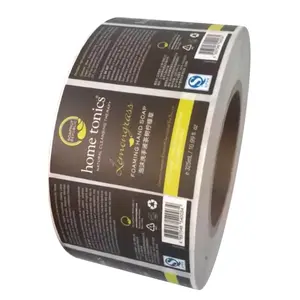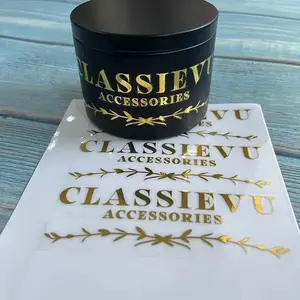Understanding Water Transfer Labels
Water transfer labels, a niche within the broader labeling industry, have emerged as a versatile solution for various applications. These labels utilize a water-activated adhesive, which, when dampened, allows for the transfer of the label's image onto a product's surface. This technology is particularly beneficial for complex surfaces where traditional adhesive labels may not adhere properly.
Types and Applications
The diversity of water transfer labels is evident in their range of types, each suited to different applications. From intricate patterns for the cosmetic industry to robust designs for automotive parts, these labels are adaptable to both flat and curved surfaces. Common applications include labeling for containers in supermarkets, branding for promotional items, and detailed graphics for exhibition displays.
Features and Materials
The construction of a water transfer label involves several layers, including a color layer, a water-soluble adhesive, and a backing paper. Materials used in the production process are chosen for their ability to dissolve in water and release the printed design seamlessly. This ensures a smooth application process and a durable end result that can withstand various environmental factors.
Advantages of Water Transfer Labeling
One of the primary advantages of using water transfer labels is their ability to conform to irregular shapes, providing a clean and professional finish. Additionally, the method allows for full-color graphics with high precision, which is crucial for detailed imagery and branding consistency. The labels are also known for their durability, resisting peeling and fading over time.
Environmental Considerations
In today's eco-conscious market, the environmental impact of labeling solutions is increasingly important. Water transfer labels often use eco-friendly inks and materials, reducing the ecological footprint associated with product labeling. This aspect is particularly appealing to businesses looking to enhance their sustainability practices.
Choosing the Right Water Transfer Label
Selecting the appropriate water transfer label for a specific application requires consideration of the substrate, the complexity of the design, and the conditions the label will face. Suppliers on Alibaba.com offer a broad spectrum of options to cater to these diverse needs, ensuring that businesses can find a labeling solution that aligns with their product specifications and branding requirements.









































 浙公网安备 33010002000092号
浙公网安备 33010002000092号 浙B2-20120091-4
浙B2-20120091-4